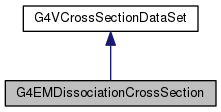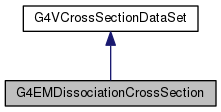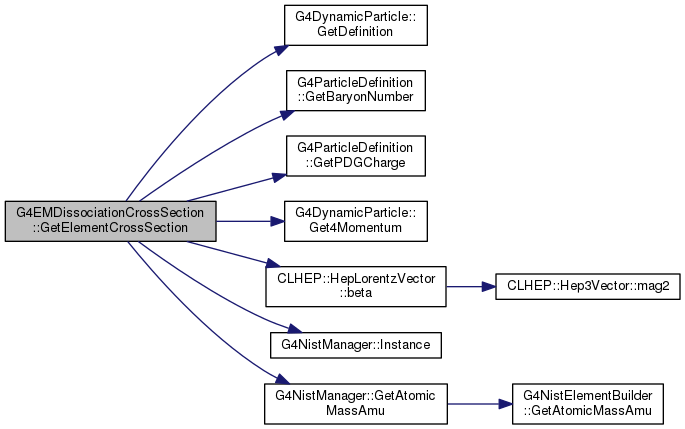|
Geant4
10.03.p01
|
|
Geant4
10.03.p01
|
#include <G4EMDissociationCrossSection.hh>


Additional Inherited Members | |
 Protected Member Functions inherited from G4VCrossSectionDataSet Protected Member Functions inherited from G4VCrossSectionDataSet | |
| void | SetName (const G4String &) |
 Protected Attributes inherited from G4VCrossSectionDataSet Protected Attributes inherited from G4VCrossSectionDataSet | |
| G4int | verboseLevel |
Definition at line 79 of file G4EMDissociationCrossSection.hh.
| G4EMDissociationCrossSection::G4EMDissociationCrossSection | ( | ) |
Definition at line 79 of file G4EMDissociationCrossSection.cc.
| G4EMDissociationCrossSection::~G4EMDissociationCrossSection | ( | ) |
Definition at line 98 of file G4EMDissociationCrossSection.cc.
| G4PhysicsFreeVector * G4EMDissociationCrossSection::GetCrossSectionForProjectile | ( | G4double | AP, |
| G4double | ZP, | ||
| G4double | , | ||
| G4double | ZT, | ||
| G4double | b, | ||
| G4double | bmin | ||
| ) |
Definition at line 165 of file G4EMDissociationCrossSection.cc.


| G4PhysicsFreeVector * G4EMDissociationCrossSection::GetCrossSectionForTarget | ( | G4double | AP, |
| G4double | ZP, | ||
| G4double | AT, | ||
| G4double | ZT, | ||
| G4double | b, | ||
| G4double | bmin | ||
| ) |
Definition at line 218 of file G4EMDissociationCrossSection.cc.

|
virtual |
Reimplemented from G4VCrossSectionDataSet.
Definition at line 125 of file G4EMDissociationCrossSection.cc.

| G4double G4EMDissociationCrossSection::GetWilsonProbabilityForProtonDissociation | ( | G4double | A, |
| G4double | Z | ||
| ) |
Definition at line 232 of file G4EMDissociationCrossSection.cc.

|
virtual |
Reimplemented from G4VCrossSectionDataSet.
Definition at line 105 of file G4EMDissociationCrossSection.cc.
